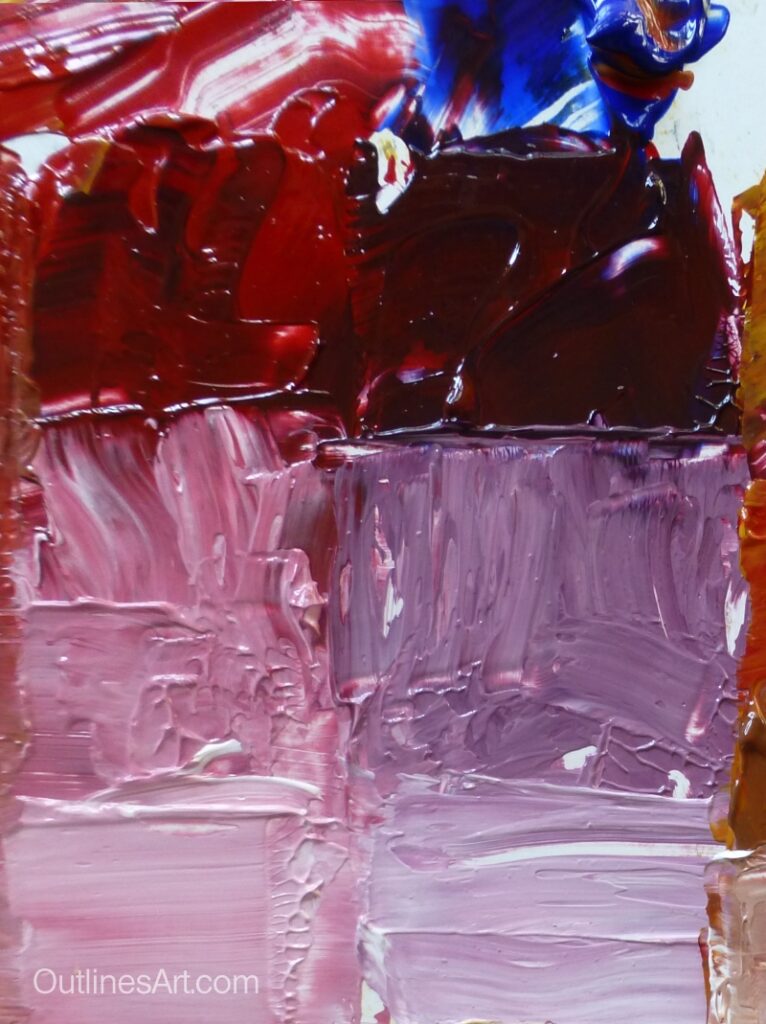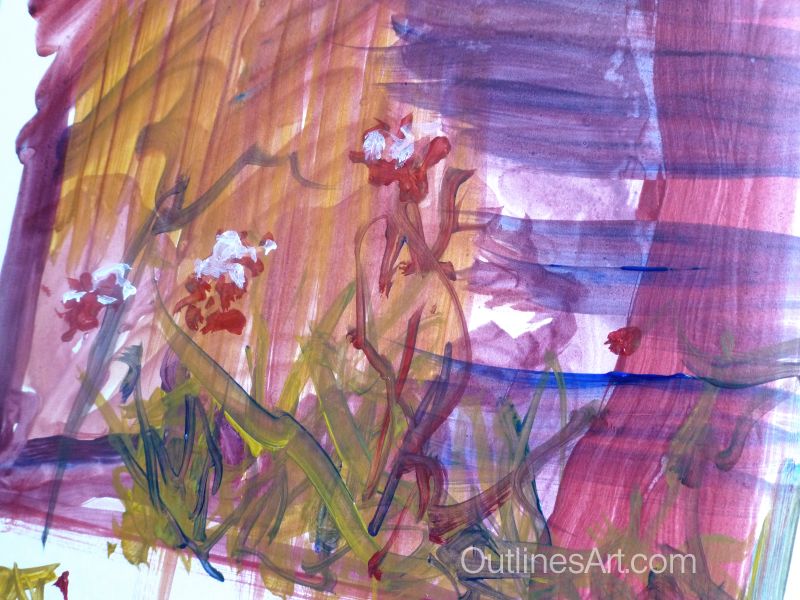Risks of Toxins in Pigments for Artist Materials
Fine Artists and printmakers are becoming increasingly aware of toxins they are exposed to in their work, the impact their art has on the environment and the need to protect themselves and the planet. Artists are wanting to exclude toxins from their studios as much as possible. Some Pigments are toxic but knowledge and careful handling can make them safe for the artist to use and most paints are safe as a dried painting hung on a wall.
Cadmium Yellow is mentioned frequently and Purples and Pinks are among the colours that need careful handling, not forgetting colours such as Dayglow and Metallics. The twelve colours we have chosen makes a range of colours that give the most mixing possibilities without using toxic colours.
Special extra colours made by other brands can be bought to blend with Outlines paints. You may want a much brighter or more intense Pink or purple that is beyond the scope of Outlines paints, and we help you find good quality colours to supplement your set that have a high level toxin safety.
However, people involved with making toys may be concerned about Risky Artist Colours that May Contain toxins at unacceptable levels.
Our range of colours is limited to twelve completely safe colours.
- They are safe when wet for the person painting and can be used by children.
- They are safe for painting things that may be handled or played with by children
Bright Purple shades can present difficulties for toymakers but Our Ultramarine and Crimson Acrylic paint is safe.
The remainder of this post may contain affiliate links for products I mention. If you click a link and buy something I may receive some compensation. This does not affect the price the price you would pay. Links open in a new tab or window so you won’t lose this page:)
Mixing Purple Shades
Purples and mauves made with Ultramarine and Crimson colours vary from Very dark through mid purples and mauves to lighter and brighter shades and finally, pale lavender shades. With practice you will be able to mix vibrant colours for painting pictures of still life, flowers, indoor and outdoor scenes and people.
Intense Pinks and Violets
If you need an extremely intense, almost glowing purple such as the colours found in modern clothing and accessories, these are beyond the scope of our range and you may need to buy one of the reds that are contain pure pigment colours.
Magentas and violets may contain toxins but here is a Magenta made by the Swiss company, Lascaux who state on their website:
“Lascaux Colours are certified as non-toxic in accordance with the Swiss Chemicals Ordinance and the relevant EU Directives. To protect the paints from micro-organisms and fungi, we add small quantities of preservatives similar to those used in household products.”
I can’t say whether the paints meet your own safety requirements.
Outlines’ Ultramarine will mix well with magenta to change the shade and arrive at the colour you want.
The same company makes a violet that you can buy to use as is, or alter by mixing.
You may be comfortable with the well-known brand, Winsor and Newton. See their version of Magenta here.
Experiments show that a good range of purple and pink colours can mixed from Outlines’ Ultramarine and Crimson. This image shows how bright they can look when mixed with water and used as washes, they are soft and subtle in intensity.
We have not added those super-intense colours to our range because we want to keep the Outlines set safe for all situations, but I do use other colours in some paintings, and I also paint with oils and watercolour!
I will add some of the other colours and mediums I use for painting in later articles.
Outlines paints mix well with other brands of acrylic paints so adding extra colours is a choice you can make if it is suitable for your artwork or end product.
What other colours do you want to mix and do you have colours you can’t do without? Let us know in the comments below.


